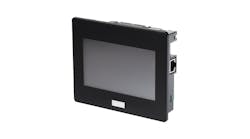A news release crossed my desk promising unplanned downtime management (UDM). Oh yeah, sure.
What if you could remove a large part of your unplanned downtime? How about targeting the input that is causing the majority of production losses? If you are an OEM, this is the panacea. If you are a user, you would want to use those OEMs that support the belief that unplanned downtime can be managed.
Predictive maintenance and OEE have already sold the industry on the idea that, if we know what is happening at the machine and/or process level, then we can beat most downtime and have as close to 100% availability and 100% efficiency as possible.
But alas the reality is that we don’t or can’t get there. Maybe. Until now. A partnership has been created.
Enter Spotlight, powered by MobiNet.
HTM Sensors has created a proven self-learning software product called Spotlight that solves the idea that unplanned downtime can be eliminated in real time. Route1 provides all things security for this partnership.
The general gist is that the product doesn’t require any customer interaction, gets data from any sequential process (presently), fires it up to the cloud securely, where the data gets automatically filtered, and delivered back to the customer on a definite purpose display/dashboard with an actionable list of top 10 things to do.
According to Tony Busseri, CEO of Route1, this solution “gets to the machine input level to show users where to look to get things fixed,” with a high security component that doesn’t exist anywhere else.
So, this is how it works. There is an industrially hardened data collection device (DCD) that runs OPC/UA, per the news release. This suggests that any device that has an OPC driver can be used with the product—great start.
The DCD is provisioned by Route1, which I have written about before, surrounding its high-level security profile in critical infrastructure. This provisioning creates a hardened Windows 10 install, as well as having resident MobiKEY host software so that the administration of this DCD is not customer available and remotely protected.
In fact, this product suggests that the customer does nothing to implement the solution, relieving them of any configuration issues. This basically creates a new sales business opportunity for all OEM machine builders and system integrators who create robot cells and skid products for their customer bases.
Security is paramount. The DCD has all the credentials embedded. It uses Route1’s full security suite to be sure that the data, links, communications and access are 100% protected and secure.
There are four areas of concern with Spotlight. Get the data, move the data, filter the data and deliver actionable data back to the customer.
The DCD gets the data and then forwards it to a database in the cloud, but not by normal means. The transfer of data uses the MobiNet Industrial Cloud data path to ensure safe and uninterrupted arrival. The data gets organized in a database, which is data-mined to filter and retrieve the actionable data.
The data then gets pushed down to a definite-purpose display and dashboard to give the user actionable information about the processes.
Bob Hooper, president of HTM Sensors, says, “Partnering with Route1 to deliver Spotlight securely allows me to sleep at night.” Strong words and endorsement.
ICS security is so important with process and operational data, most other applications can learn a lot from this approach.
Brian Brunetti, president of Route1, indicated that the security of this solution was architected from the start. Is this the start of something new? Will ICS solutions finally take the security of applications and data seriously? Spotlight has.
Brunetti goes on to say that the analytic results are the gold mine of Spotlight and the delivery of this data is the holy grail. Access to this data is all about credentials—PKI credentials. This means that the plant floor device and the dashboards provide credentials to the cloud to send or receive data. Desktop PKI credentials are also published if a desktop browser is to be used.
ALSO READ: TIM the robot monitors the health of CERN's large hadron collider
Spotlight also shines a light on ICS security and the absolute need for data protection when you are dealing with the cloud, as well as user authentication. In this case the definite purpose display, which is intelligent, as well as the DCD, are users that are authenticated to the Route1 servers and the cloud.
So this story is about two things—unplanned downtime management, which in itself is a unique troubleshooting and production efficiency tool, along with planned security of the solution. Both aspects of this new technology and approach will serve as a springboard for future solutions in the OEM and user-based markets for machine control.






